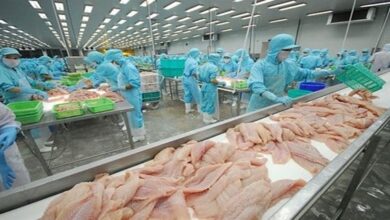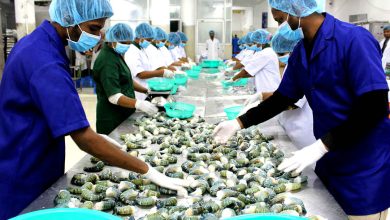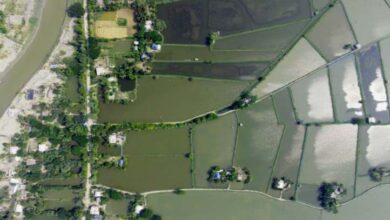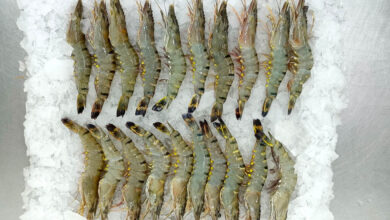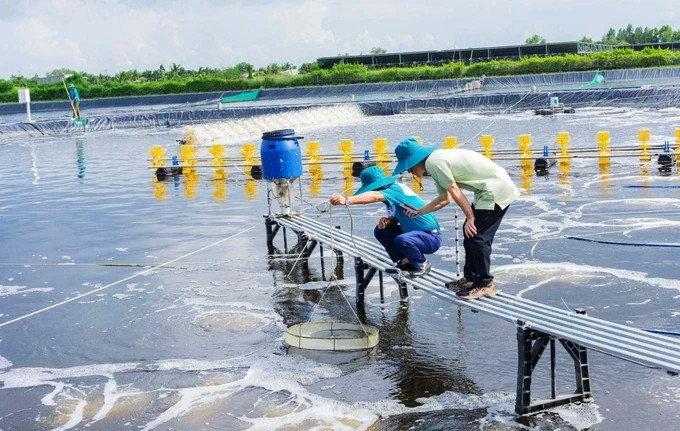
The Mekong Delta shrimp farmers are embracing cutting-edge agricultural practices, leveraging artificial intelligence (AI) for super-intensive farming. The traditional models faced challenges such as environmental pollution, disease outbreaks, and high operational costs. Now, a pioneering super-intensive model, piloted by the Science and Technology Department of Ca Mau Province and the Research Institute for Aquaculture No.2, is transforming the landscape.
In this biologically safe approach, commercial white-legged shrimps are raised in three phases using circular technology. Huynh Thai Nguyen, a farmer in Cai Nuoc District, has invested VND2 billion to implement this innovative model on a 1-hectare farm.
The closed-circular system comprises various ponds and ditches ensuring a controlled environment. There is one nursery pond, one pond to process input water, two Gracilaria tenuistipitata ponds, one tilapia pond, one biological filter ditch, one bioflocs ditch, and four shrimp ponds with a surface area of 1,000m2 each. Shrimps can be collected after 90 days, reaching a weight of 26 shrimps per kilo. Shrimp maturity is achieved in just 90 days, with a remarkable output increase of 20% to 60 tonnes per hectare.
Unlike traditional models, super-intensive farming reduces feed ratios, input water treatment costs, and labor requirements. The system operates without antibiotics, decreasing disease occurrences, and eliminates wastewater discharge into the environment. This sustainable and efficient model aligns with the Mekong Delta’s push for digital technologies like cloud computing and AI to enhance environmental control and disease management for economic benefits.
Farmers in Tra Vinh Province are adopting the Tomgoxy model, developed by Rynan Technologies Vietnam JSC., which integrates AI and multidisciplinary knowledge. Through a smartphone app, farmers can control measuring and testing devices to monitor water quality and shrimp health. AI facilitates disease detection, significantly cutting costs and increasing output by 40% to 70%. The app also records daily farming activities for traceability and safety certification purposes.
The Mekong Delta, a key region for shrimp farming, sees AI-powered super-intensive techniques as a strategic shift from traditional models. The National Action Plan aims to boost brackish water shrimp exports to $8.4 billion by 2025. However, challenges such as price competition with other countries underscore the importance of innovation for economic viability.
Phan Tan Thanh, Director of the Science and Technology Department of Ca Mau Province, emphasizes the necessity of AI and advanced technologies to control diseases and environmental factors, reducing operational and labor costs. Meanwhile, Bac Lieu Province aims to become the shrimp-raising capital, introducing a Hi-tech Industrial Park for Shrimp Raising and implementing disease monitoring programs. These initiatives seek to establish disease-free shrimp production chains, obtaining certifications for international markets and ensuring the sustainable growth of the shrimp industry.

